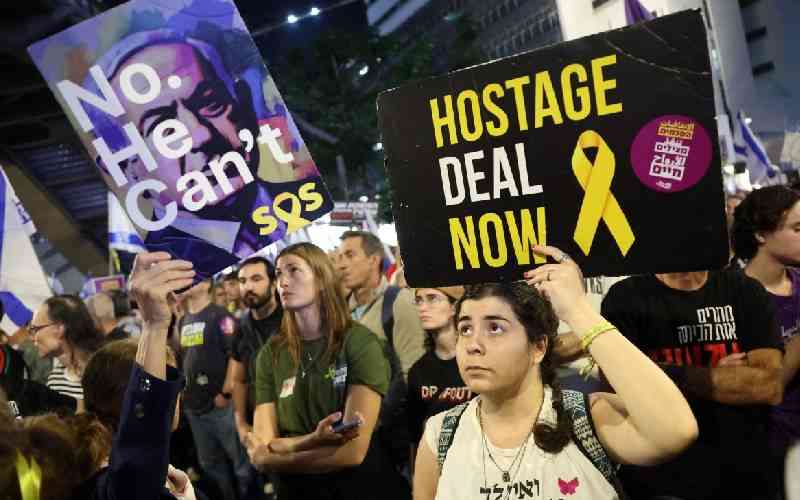
NAIROBI: Kenya has suffered perennial industrial action since the pre-colonial era. Teachers, nurses and doctors’ strikes are just a few examples. The biggest challenge is that the pattern keeps recurring, yet the country does not seem to have lasting solutions.
The first teachers’ strike in Kenya was in 1962 just before the country achieved independence. From that time, 11 teachers’ strikes have occurred.
Their second strike was in October 1962, and was declared illegal by the government. Some officials of the Kenya National Union of Teachers (Knut) were subsequently arrested. However, grievances over the court’s ruling forced the charges to be dropped indefinitely.
In November 1966, the third teachers’ strike took place. This pushed the government to form an institution to serve teachers. The Teachers Service Commission (TSC) came into being through a Bill that was tabled in Parliament by Jeremiah Nyagah, the then minister of Education.
Later, the need for an escrow between TSC and KNUT saw the formation of the Teachers Service Remuneration Committee (TSRC), which drafted recommendations from both parties and forwarded them to the ministry.
However, the ministry was not willing to implement these recommendations, which led to another strike in November 1969.
The government bowed to pressure again, but teachers were once more on strike in October 1997 demanding a 300 per cent pay rise.
VITAL PART
Is this problem worth fixing? The answer is a resounding yes.
Teachers are a vital part of the workforce in any progressive society. Without their influence and input, there would be no proper avenue for learning and knowledge advancement. Teachers’ strikes are, therefore, disastrous. They paralyse society and disrupt learning.
Doctors and nurses’ strikes have similar impact. Indeed, industrial action has been a cross-sectoral problem since the pre-colonial era.
Does the Government have a strategy for dealing with it? Yes, it has a strategy. But there has been a vicious cycle to the strikes, and the Government’s response has followed a similar pattern.
Since 1962, the first response to any industrial strike has been threats and a State declaration on its illegality. This is normally followed by court battles that end up on the streets before the government eventually calls a stakeholders’ meeting that comes up with a short-term solution.
The question is: Is this strategy strategic? No, it is not.
Stay informed. Subscribe to our newsletter
Strategically, whenever one is faced with a problem, the first step should be to diagnose it to classify it. A problem can be classified as generic, apparently unique, truly unique or exceptionally unique.
A generic problem is one that occurred before, was solved and is likely to occur again in future.
An apparently unique one is a generic problem disguised as unique. A truly unique one has never occurred, but has chances of occurring in the future, while an exceptionally unique one is occurring for the first time and will never occur again.
These four types of problems need to be treated differently. Generic and apparently unique problems should be solved as they were in the past. A truly unique problem needs a new solution and structures for solving similar problems in future. An exceptionally unique problem, by its nature, is solved once and for all as it will not occur again.
Teachers, doctors and nurses’ strikes in Kenya are generic. They basically revolve around working conditions and pay rises.
Why, then, should the Government start with court injunctions, an approach that has not succeeded since 1962? In fact, this year the Government’s strategy failed since the court ruled against it.
The trend has always been: workers demand a pay rise; the government responds, “Can’t pay, won’t pay”’ workers announce a strike; the government declares it illegal and threatens them with the sack and court action; the strike takes place anyway; the workers and government negotiate and a ‘return-to-work formula’ (rather than a stay-at-work one) is agreed on. Eventually, the next strike call comes and the cycle is repeated.
This is one definition of insanity — doing the same thing over and over and expecting a different result. The solution, therefore, lies in coming up with a different strategy of approaching industrial action in the public sector.
This involves stakeholder engagement for long-term solutions, rather than short-term ones.
It also requires the Government to develop relational intelligence that enhances the engagement of all legitimate stakeholders on a negotiated settlement to stamp strikes out of Kenya.
The writer is MBA academic director and senior lecturer on strategy and execution at Strathmore Business School.
[email protected]
 The Standard Group Plc is a
multi-media organization with investments in media platforms spanning newspaper
print operations, television, radio broadcasting, digital and online services. The
Standard Group is recognized as a leading multi-media house in Kenya with a key
influence in matters of national and international interest.
The Standard Group Plc is a
multi-media organization with investments in media platforms spanning newspaper
print operations, television, radio broadcasting, digital and online services. The
Standard Group is recognized as a leading multi-media house in Kenya with a key
influence in matters of national and international interest.
 The Standard Group Plc is a
multi-media organization with investments in media platforms spanning newspaper
print operations, television, radio broadcasting, digital and online services. The
Standard Group is recognized as a leading multi-media house in Kenya with a key
influence in matters of national and international interest.
The Standard Group Plc is a
multi-media organization with investments in media platforms spanning newspaper
print operations, television, radio broadcasting, digital and online services. The
Standard Group is recognized as a leading multi-media house in Kenya with a key
influence in matters of national and international interest.










